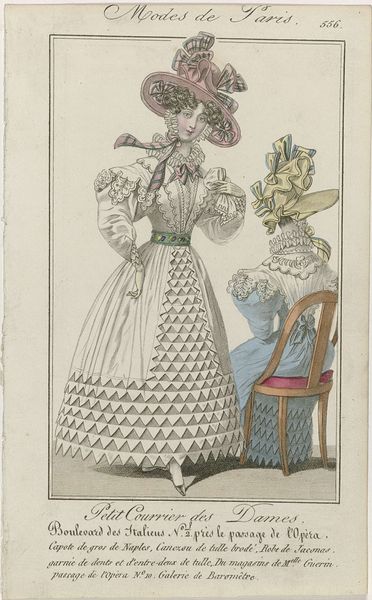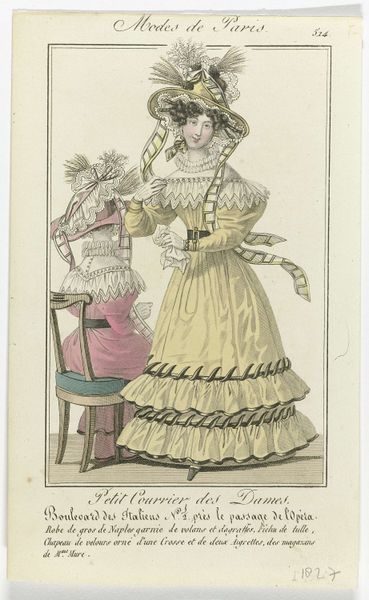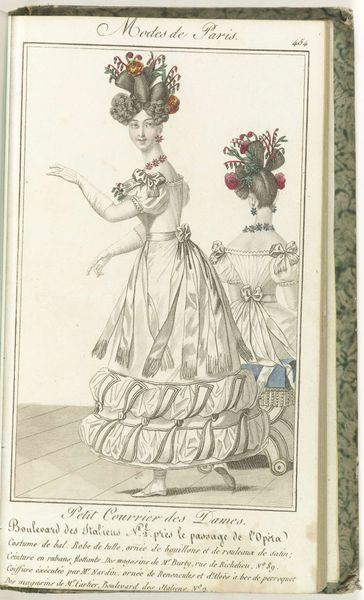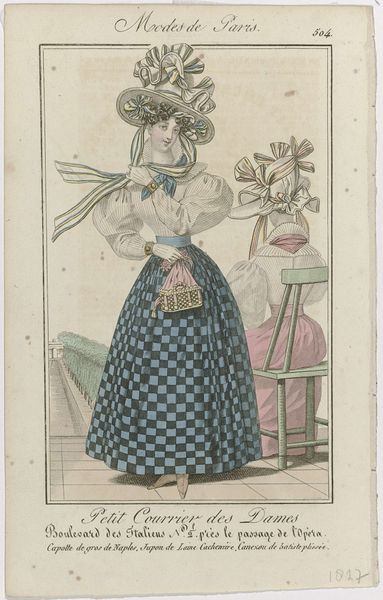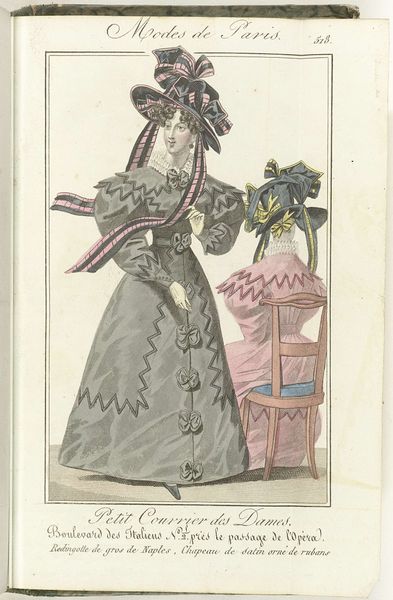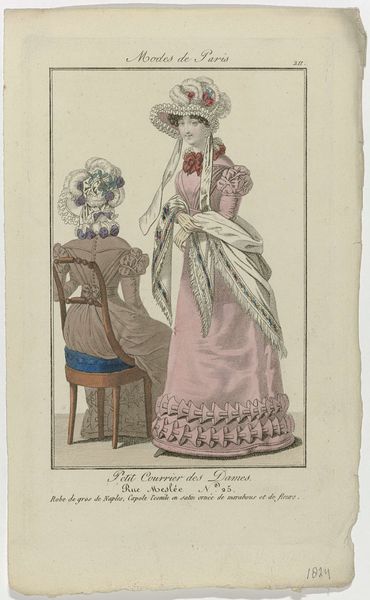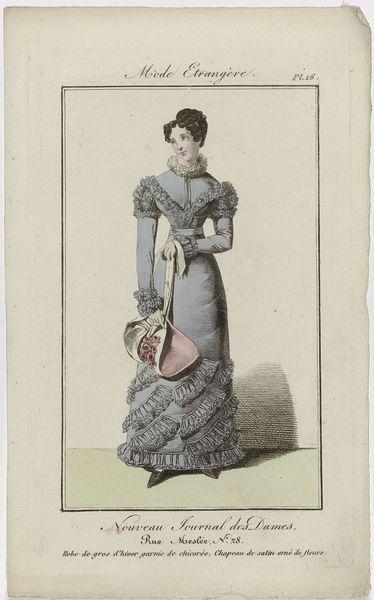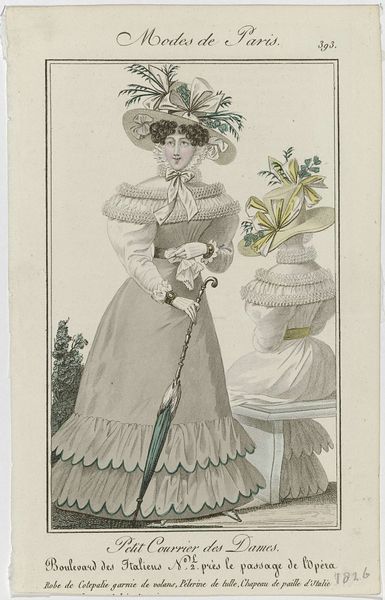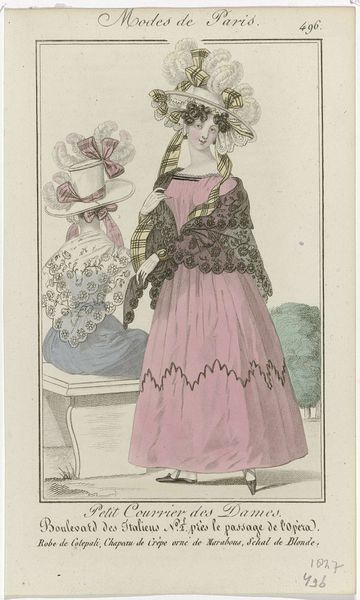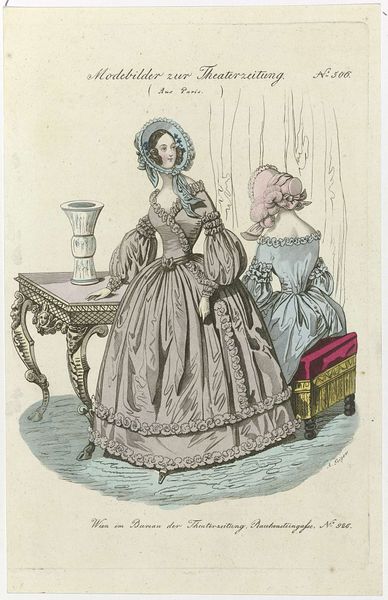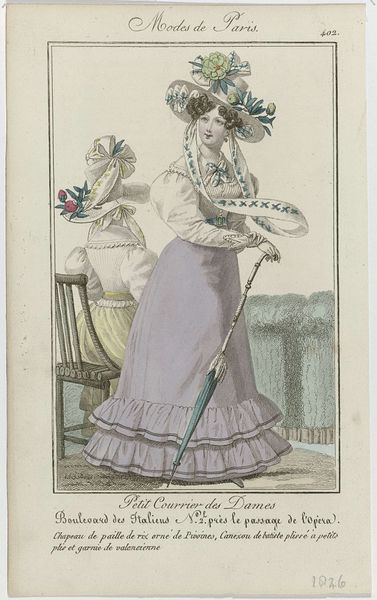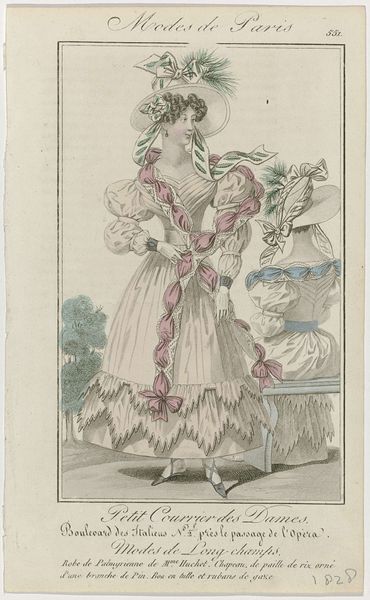
drawing, print, paper, watercolor, ink
#
portrait
#
drawing
# print
#
paper
#
watercolor
#
ink
#
romanticism
#
watercolour illustration
#
genre-painting
#
decorative-art
#
dress
Dimensions: height 207 mm, width 128 mm
Copyright: Rijks Museum: Open Domain
Editor: This lovely image is titled "Petit Courrier des Dames, 1826, No. 360" and is a drawing rendered with watercolor and ink on paper. What strikes me most is the clear depiction of silk and tulle – it makes me think about the artistry and craftsmanship of dressmaking in the 19th century. What do you make of it? Curator: I think you're right to focus on the materials. What interests me about an image like this is not necessarily the aesthetic, but the silk itself – its origins, how it was processed, who wove it, and the social structures that allowed this kind of consumption. Notice how much fabric is gathered in that skirt and bonnet. Can you imagine the labor involved in its production? Editor: Absolutely! The pleating, the gathering… it speaks volumes about the time and skill involved. It definitely seems to highlight a certain class, a woman of leisure. Curator: Exactly. These "fashion plates" weren’t just about showing the latest styles. They were documenting a system of labor and consumption. Who had access to these silks, tulles and dyes? What was the material cost for others? How was the textile industry developing during this period? I always see these kinds of images as evidence of the fashion industry, but also the global dynamics of extraction, production and distribution that shaped even these "decorative" elements. Editor: So you see the dress less as an aesthetic object and more as a product of its economic and social moment. Curator: Precisely! The image itself is a commodity, too – a print made using specific techniques that was circulated amongst a certain demographic. I always want to know, who was able to consume *this* image, and what did that represent about their place in society? Editor: I never thought about fashion plates that way, but seeing the drawing through a materialist lens really illuminates the economic underpinnings of fashion and its representation. Curator: Glad I could broaden your view! Looking closely at materials opens up so many new avenues for interpreting art.
Comments
No comments
Be the first to comment and join the conversation on the ultimate creative platform.

